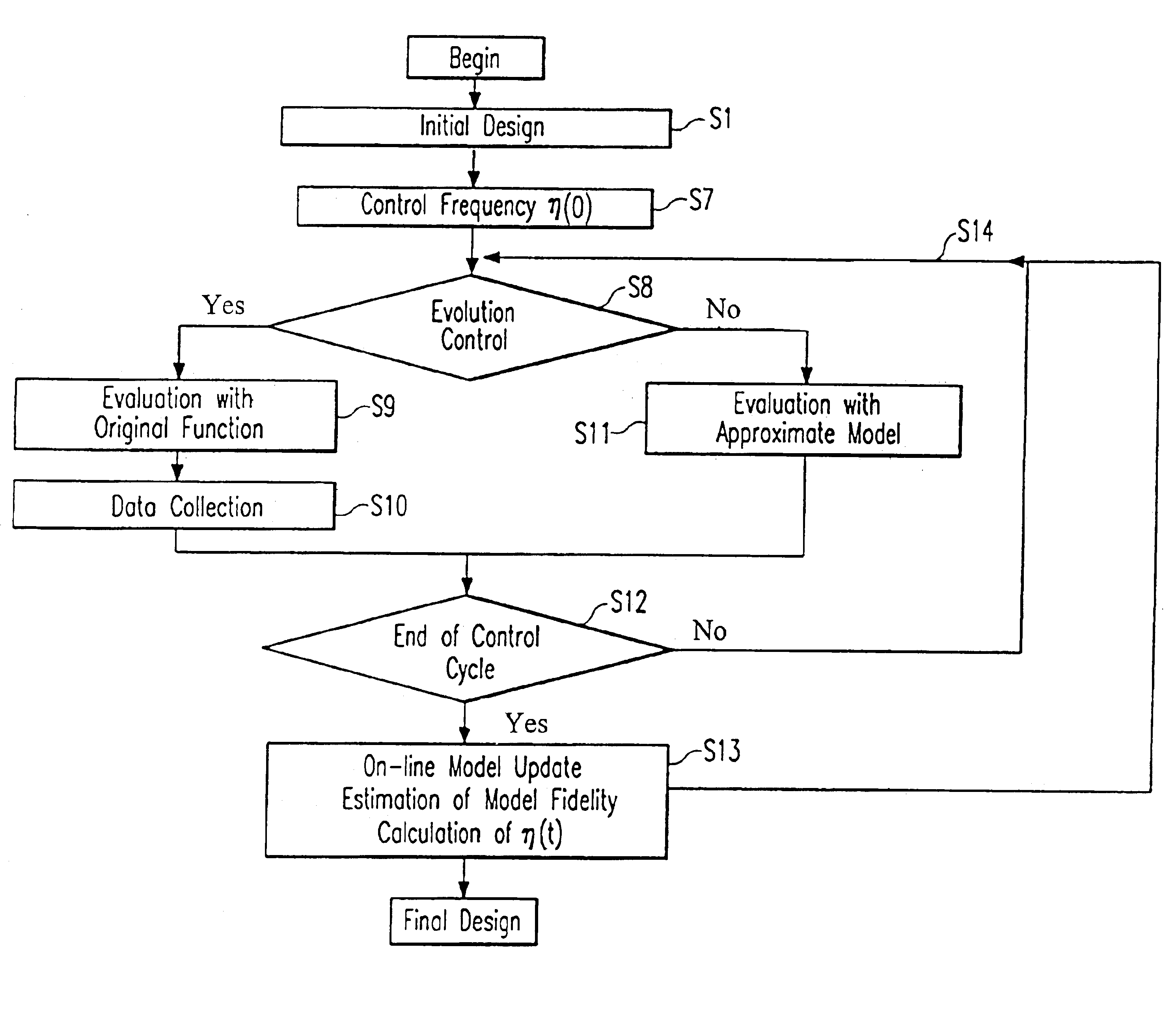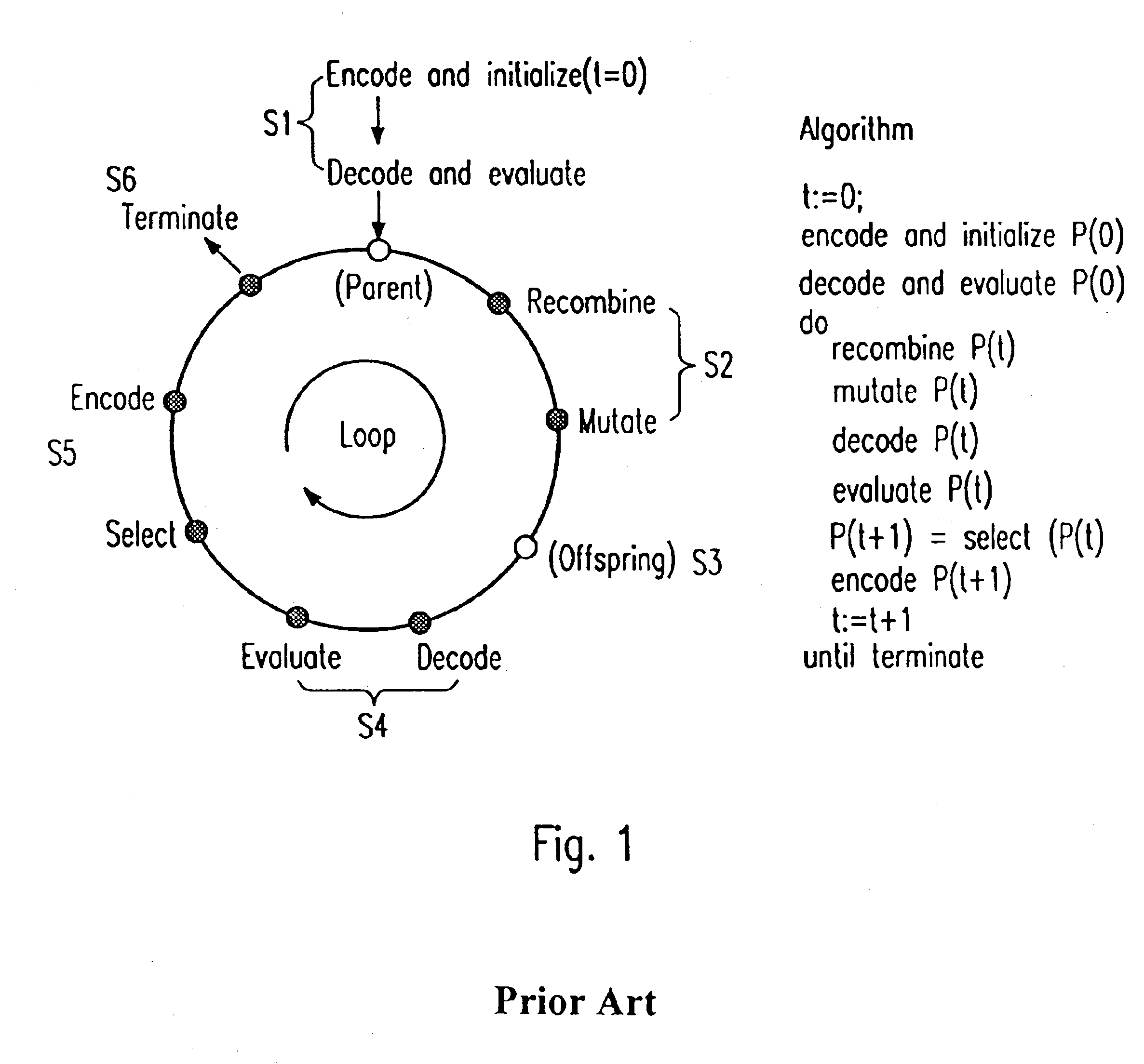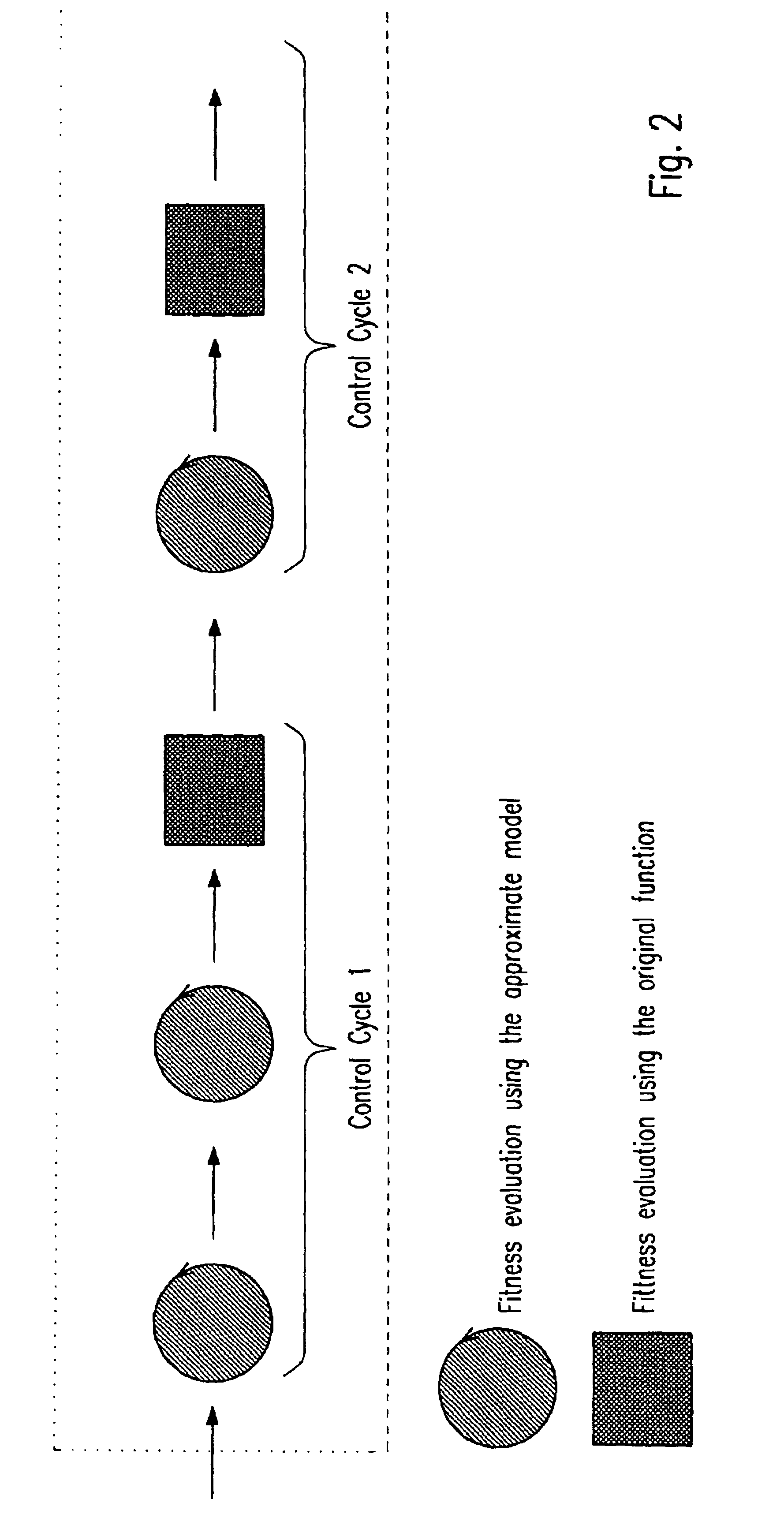Approximate fitness functions
a fitness function and approximation function technology, applied in computing models, analog and hybrid computing, biological neural network models, etc., can solve the problems of large time consumption, difficult to get a model with sufficient approximation accuracy, and aerodynamic optimization, so as to reduce computation time and complexity
- Summary
- Abstract
- Description
- Claims
- Application Information
AI Technical Summary
Benefits of technology
Problems solved by technology
Method used
Image
Examples
Embodiment Construction
[0046]FIG. 2 shows the technique of calculating a fitness evaluation using both approximate models (for example implemented by means of neural network models) and the original function according to adaptive control cycle. A control cycle is terminated by one fitness evaluation using the original function preceded by no, one or a plurality of fitness evaluations using the approximate model. Obviously the original function is not used for every generation in a control cycle. The control cycle 1 in FIG. 2 is composed of two generations using the approximate model and is terminated by one generation using the original function, whereas the control cycle 2 is composed of one generation using the approximate model and is terminated by one generation using the original function. In this example at the end of the control cycle 1 it has been decided to increase the frequency of use of the original function.
[0047]FIG. 3 shows a flow chart of a process of the present invention for online adapt...
PUM
 Login to View More
Login to View More Abstract
Description
Claims
Application Information
 Login to View More
Login to View More - R&D
- Intellectual Property
- Life Sciences
- Materials
- Tech Scout
- Unparalleled Data Quality
- Higher Quality Content
- 60% Fewer Hallucinations
Browse by: Latest US Patents, China's latest patents, Technical Efficacy Thesaurus, Application Domain, Technology Topic, Popular Technical Reports.
© 2025 PatSnap. All rights reserved.Legal|Privacy policy|Modern Slavery Act Transparency Statement|Sitemap|About US| Contact US: help@patsnap.com



